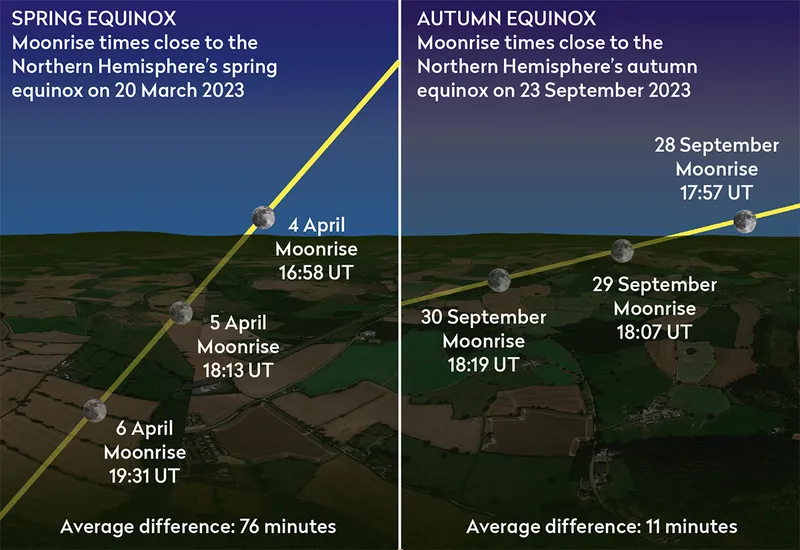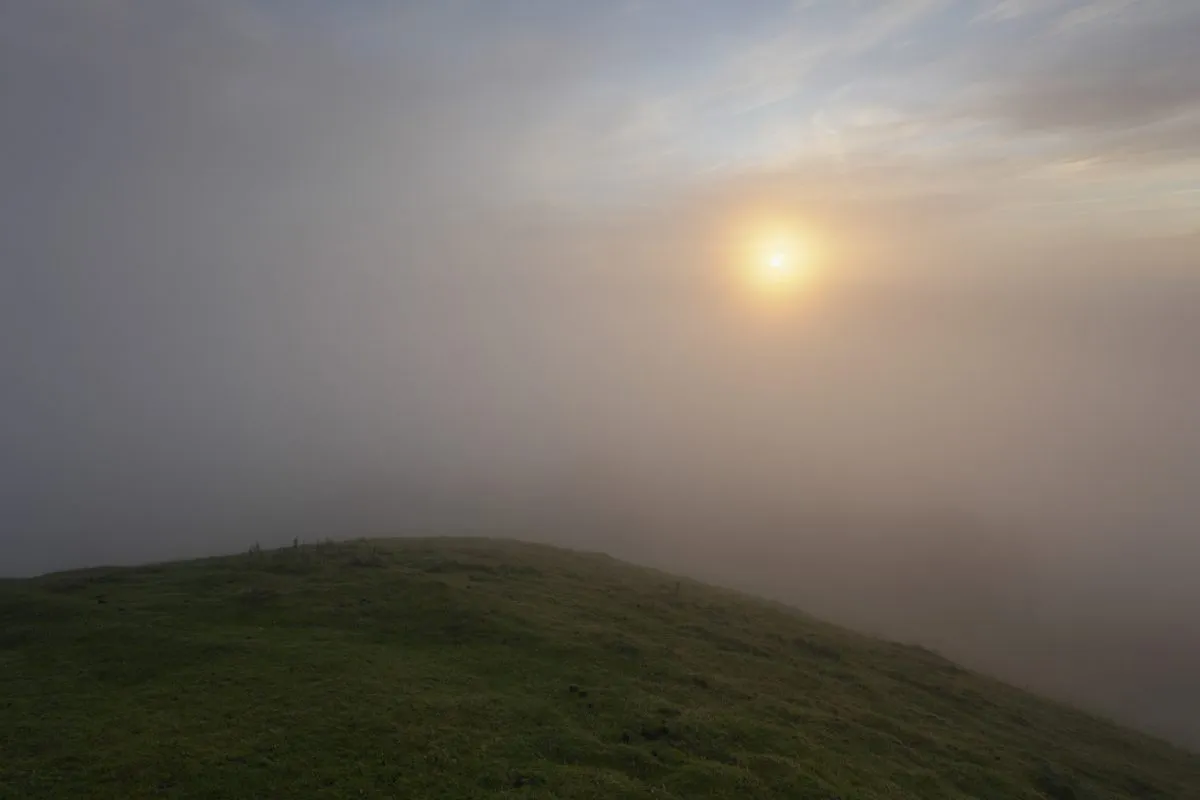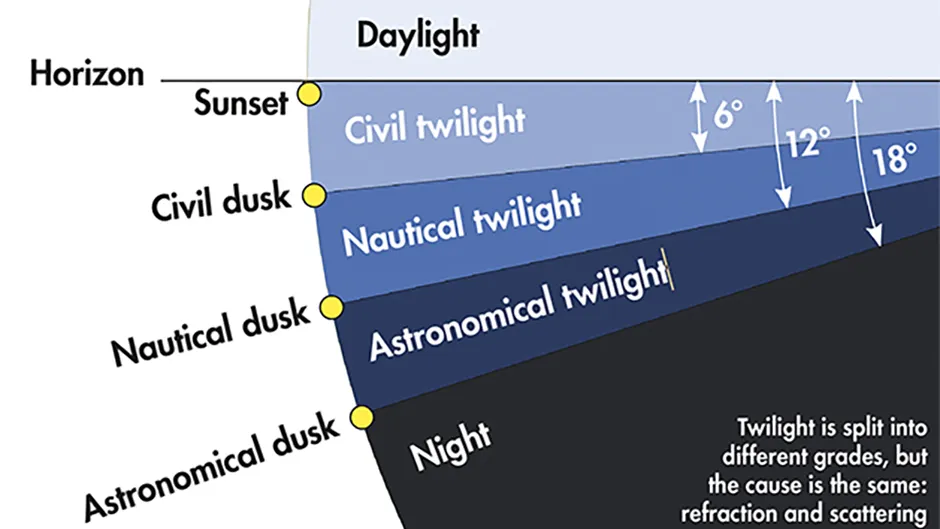In 2023 the autumn equinox occurs this week, on 23 September, marking the day when we experience roughly the same amount of daytime and nighttime.
In this guide we'll explore the autumn equinox 2023 , when it occurs and what it means for observing the Moon.
Read more:

Equinox explained
An equinox is one of two moments in a planet’s orbit around the Sun when its axis of rotation – in Earth’s case, the line connecting the north and south poles – points neither towards nor away from the Sun.
Astronomically speaking, autumn begins at the September (or southward) equinox.
In 2023, the centre of the Sun crosses the celestial equator at 07:50 BST (06:50 UT) on Saturday 23 Septmber, marking the Northern Hemisphere’s autumn equinox.
At this point the Sun moves from the northern celestial hemisphere to the southern celestial hemisphere.

The September equinox also marks which full Moon is determined as the Harvest Moon for that year.
Those who observe the southern hemisphere sky mark the advent of spring on this date, which is their vernal rather than autumnal equinox.

What the autumn equinox 2023 means
The term equinox is derived from the Latin for ‘equal night’
It reflects how on these dates, outside of the polar regions, the Sun will be above the horizon for as long as it is below it.
So why the extra daylight, which ranges from a few minutes at the equator to over 20 minutes nearer the poles?
Part of the answer is that we see the Sun as a resolved disc measuring 0.5º across rather than as a point source.
Astronomical convention defines the sunrise and sunset times as the first and last moments that the solar disc can be seen, rather than when its centre crosses the horizon.
Sunrise and sunset are therefore earlier and later, respectively, than the times at which the Sun is aligned with the horizon.
This ‘extra’ daytime is gained twice per day as the 0.25º between the limb and the centre of the Sun rotates through the horizon.

Refraction and daylight extension
Daytime is extended even further by the refraction of sunlight in Earth’s atmosphere.
Refraction is the bending of waves as they travel through materials of different density, as sunlight does when entering our thick atmosphere from interplanetary space.
When we view the Sun near the horizon, we see it through a layer of atmosphere that bends its light toward us by a full 0.5º, making it appear higher in the sky than it actually is.
This means that at dawn, we see the full disc of the Sun above the horizon when it is still entirely below it!
More ‘extra’ daytime is needed for Earth to rotate through this additional angle.

The magnitude of both these effects depends on latitude.
At the equator, where the path of the Sun is perpendicular to the horizon, the Sun’s apparent motion of 1º every four minutes yields a day that is roughly six minutes longer than the night.
Moving closer to the poles, the path of the Sun relative to the horizon is increasingly slanted
So the Sun’s apparent motion in the vertical direction is slower and it takes longer to clear the horizon.
At 50ºN, stargazers face an extra 10 minutes of day before the first night of autumn begins.
Equinoxes of Saturn

Equinoxes aren’t just for Earth
All planets with a significantly tilted axis of rotation move through two equinox points as they orbit the Sun.
But these moments are particularly spectacular on Saturn, as its brilliant rings seem to disappear!
Saturn's rings are comprised of icy particles orbiting in a thin disc aligned with the planet’s equatorial plane.
These are lit by the Sun throughout the Saturnian year.
When Saturn reaches equinox, the rings are edge-on to the Sun and cast themselves into shadow, vanishing from sight.
Saturn’s equinoxes happen once every 14.7 Earth years.
Galileo witnessed this in 1612, two years after discovering the rings, and asked, in shock, “Has Saturn swallowed his children?”
In 2009, the Cassini spacecraft captured an amazing image of hugely dimmed rings illuminated mainly by sunlight reflected off Saturn.
We won’t see this phenomenon again until 2024.
Olivia Johnson is an astronomer specialising in science education. This guide originally appeared in the September 2015 issue of BBC Sky at Night Magazine.